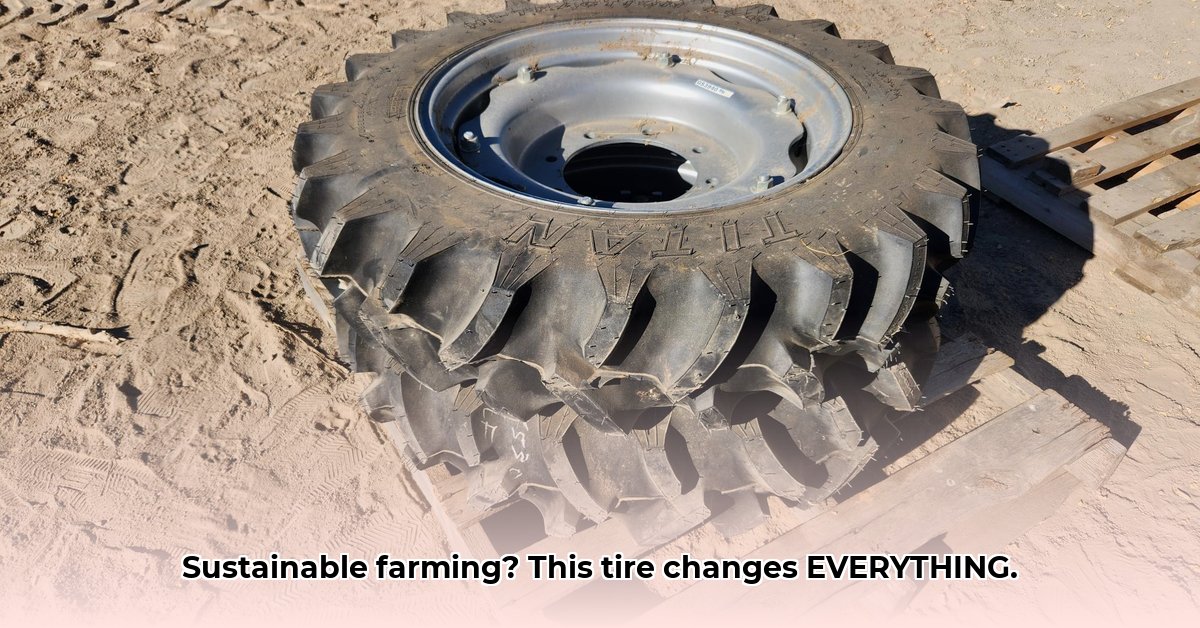
9.5-24 Tractor Tire: A Sustainability Assessment
Farming practices are increasingly emphasizing sustainability, making the selection of agricultural equipment crucial. Tractor tires, in particular, significantly impact soil health, fuel efficiency, and overall environmental footprint. This review critically evaluates the Carlisle 9.5-24 Farm Specialist R-1 tire's contribution to sustainable agriculture, highlighting the need for greater data transparency and standardized testing within the industry. We will analyze manufacturer claims against available evidence, emphasizing the significant limitations imposed by a lack of quantitative data. For more information on tire weights, see this helpful resource: tire weights.
Tire Specifications and Manufacturer Claims
The Carlisle Farm Specialist R-1 9.5-24 tire is marketed as a versatile option for various soil conditions. Manufacturer claims emphasize reduced soil compaction and improved fuel efficiency, attributed to features like overlapping center tread lugs and a long-bar tread design. Increased puncture resistance is also touted due to its robust sidewalls. 1 However, concrete data supporting these claims is largely absent from publicly available resources. Specific metrics regarding fuel savings, lifespan, and soil compaction impact remain unavailable, hindering a comprehensive assessment of its sustainability performance. This lack of transparency prevents farmers from making fully informed decisions.
Analysis of Sustainability Claims
How effectively does the Carlisle 9.5-24 contribute to sustainable agricultural practices? The answer, unfortunately, remains elusive due to an absence of rigorous, quantifiable data. While features like the tread design suggest potential benefits in reducing soil compaction and improving fuel efficiency, these benefits are not substantiated by independent testing or published research. Crucially, there's no readily accessible information regarding the tire's overall life cycle environmental impact, including manufacturing processes, material sourcing, and end-of-life recyclability. This lack of information is a considerable impediment to a thorough sustainability evaluation. How can we determine true environmental impact without knowing the carbon footprint associated with its production and disposal?
Does the enhanced traction translate to demonstrable fuel savings? How does the tire's lifespan compare to alternative options? What is the precise effect on soil density after repeated passes? These are fundamental questions that remain unanswered. This lack of data presents a significant obstacle to evaluating the true sustainability of this tire.
Comparison with Alternatives
A robust assessment requires a comparison with alternative tractor tires explicitly designed for minimal ground disturbance and fuel efficiency. Without comparative data focusing on quantifiable metrics – such as fuel consumption per acre, soil compaction measurements after a set number of passes, and tire lifespan under defined operating conditions – a meaningful comparison is impossible. This critical lack of benchmark data is a pervasive issue within the agricultural tire industry, limiting informed choices for growers seeking environmentally responsible solutions.
Recommendations for Future Research
Addressing the deficiencies in available data requires a concerted effort from various stakeholders. This necessitates a rigorous and transparent approach to both data acquisition and its dissemination within the agricultural community.
1. Data-Driven Farming Practices: Farmers should systematically track fuel consumption, tire lifespan, and observable changes in soil conditions across multiple tire types, including the Carlisle 9.5-24. This will generate valuable field-based data.
2. Independent Tire Testing: Tire manufacturers, such as Carlisle, should commission independent third-party testing to validate claims of fuel efficiency, soil compaction, and lifespan. Results should be available publicly for transparency.
3. Standardized Testing Protocols: Researchers and universities should develop standardized test protocols, ensuring consistent and comparable data across different tire types. These protocols should incorporate life-cycle assessments to evaluate the overall environmental impact. This structured approach is crucial for industry-wide comparison.
4. Policy Support and Incentives: Policymakers should incentivize the development and adoption of sustainable tire technologies through financial support for research, development, and the adoption of best practices that emphasize data-driven decision-making.
Conclusion
The Carlisle 9.5-24 tire offers potential benefits for sustainable agriculture, but its true contribution remains unproven due to a critical lack of quantitative data. A collaborative effort involving farmers, manufacturers, researchers, and policymakers is essential to improve data transparency and establish standardized testing protocols. Without a data-driven approach, making truly informed decisions about sustainable agricultural practices remains a significant challenge. The future of sustainable agriculture necessitates this improved data collection and a commitment to evidence-based decision-making.